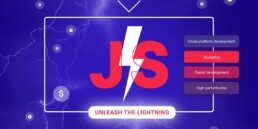Push notifications, when first introduced, were a true godsend for app publishers, the go-to wonder feature giving them a way to instantly reach users on their devices. But much has changed since then. There is a strong bias against push and marketers themselves are to blame. Notifications are used by way too many mobile apps, and often for completely wrong reasons. Notoriously lacking moderation, they have quickly gotten out of hand, and become the next wave of spam – a nuisance plaguing the web.
While it is true that badly implemented notifications can push your customers away, they are not inherently a bad thing! It’s just a feature, a tool you use if your app needs to communicate something in a timely, personal and actionable manner.

Opt-in boxes on iOS, Chrome and Android

In this article, we’ll discuss the do’s and don’ts of push notifications, helping to keep your users’ engagement rates high. These efforts boil down to knowing what (and what not) to notify your users about, and what to say when you finally have their attention.
First, some statistics
While push notifications are supported by both desktop and mobile devices, research shows 80% of all push notifications land on smartphones. They are a powerful marketing tool, but have to be used with extreme caution. Google Chrome’s users are the most likely to opt-in (90% of all push subscribers).

Rich web push notifications on mobile and desktop
Rich web push notifications use big images and drive higher CTR than notifications with standard, small icons (2-5% higher).
Native browser widgets are more trusted and have 5-10% higher opt-in rate than designed opt-in boxes. The same is relevant for the comparison between HTTP and HTTPS websites.
Opt-in rates for push notifications also vary per app category (industry)
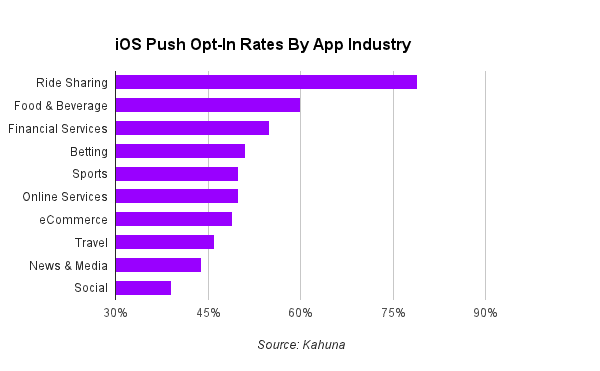
Push notifications per app category (iOS)
Educate your users about your motives
To drive higher opt-in rates for your push notifications, educate your users about the value they will provide. It’s much like an onboarding process for the customers using your app, and something that increases their opt-in rate.
If your app needs push notifications to work to its full potential, make sure you properly show it. How? With an animation, splash screen or a step-by-step tutorial explaining the benefits of notifications.
Some publishers have seen a 55% uplift in the opt-in rate compared to “no education”.

Source
Know when to prompt the user for consent
Acquiring user consent is the crucial prerequisite allowing you to display push notifications. Displaying the push notification opt-in box is a critical (yet underestimated) moment, so it has to be executed really carefully for the best results. You basically have just one shot.
The biggest mistake you can make here is to display a couple of boxes, all at the same time, in the first second of opening the page, e.g. a push notification opt-in, data processing consent box, a request to sign up to a newsletter… and a “disable AdBlock” message. Add a pop-up ad on top and there is little else you can do to break it even more.
From the user’s perspective, this is a bit overwhelming, if not discouraging. A mild example of such excess would be a page greeting the user with something like this:
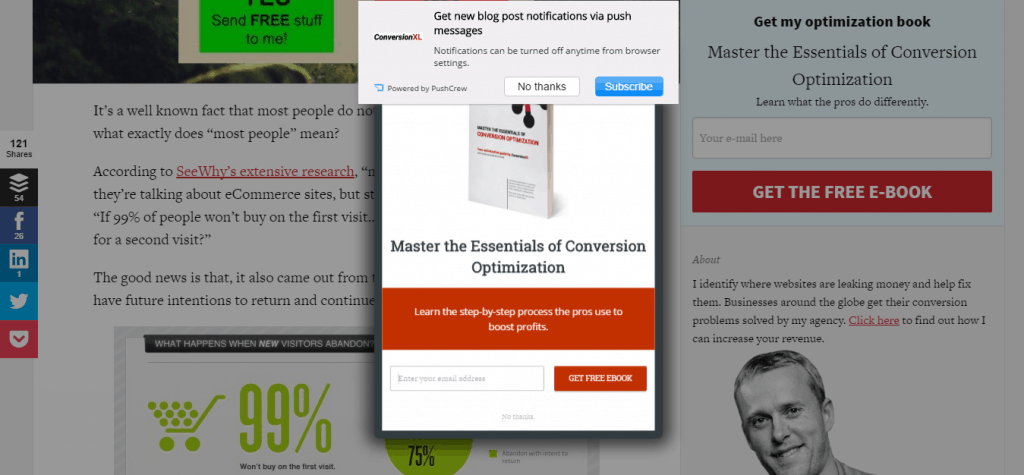
How not to display push notifications opt-in boxes: display other boxes on top or next to it.
Picture this: the visitor to the website has come to you with one purpose in mind – to quickly skim your post and find out if it contains anything of value. They will do anything to get these boxes out of the way just to reach the content (and probably click “no” to all). Expecting them to subscribe to your newsletter AND agree to push notifications at this point is rather ridiculous.
And once push notifications consent is declined, it has to be manually enabled in the browser or phone settings, which is something that probably won’t happen, just see: Android instructions here. For Chrome, users can follow these instructions to adjust how the browser treats push requests.
Clearly, it’s much easier to get the opt-in from the user on the first occasion than make them change the settings later on.
Bottom line: to maximize your chances, always make sure it’s a 100% fitting moment to display a subscription prompt.
Keep the character count low
If your push notifications are not displayed correctly and truncated, it may be due to the message being too long. This may hurt your conversions. The sweet spot you’re aiming for is ten or fewer words.
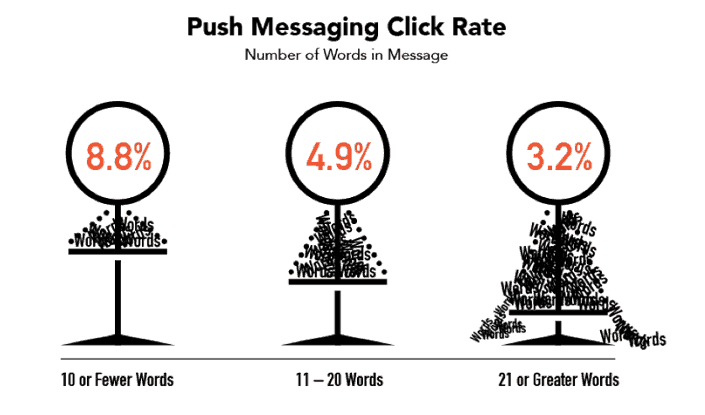
Source
Keep your push notifications for the really important stuff
Make sure you’re not using push notifications as a way to send spam messages to your users. Research shows that push notifications with the highest engagement and positive response rates are the ones that provide actual value to the users.
But how to decide what’s really relevant to the user? If you’re having a hard time deciding whether the message is really valuable, make a small thought experiment: is the message something your personal assistant or colleague would care to inform you about? If not, then it’s probably not important enough for a push notification.
Really important notifications affect the user’s real world plans and decisions (e.g severe weather conditions or a traffic jam impacting the travel time). Push should also be used to communicate important status updates for topics that are relevant to the user, allowing them to react quickly and effectively (stock exchange rates, a new comment on the personal blog, etc.).
When you go overboard with your push notifications or do a really bad job at personalizing them, you will almost certainly lose the user’s consent to receive them. And once your notifications are blocked, there is a very slim chance that the user would be willing to activate them again.
So, to do push notifications right, make sure you’re always delivering real value to your users, and notify them of things that really matter, e.g.:
- Your driver is waiting downstairs
- You’ve got new post comments
- The auction you’re bidding in ends in 30mins
- John Smith has sent you money via Bankingapp
Of course, not all apps provide this kind of valuable information, but even entertainment-focused apps can lose user interest by abusing push and pretending urgency when there is none.
Get the frequency right to drive high engagement
The timing and frequency of push notifications are really important, and less is usually more. Too frequent notifications may lead to lower engagement, fewer downloads, and ultimately uninstallation of the app (i.e. if users have no idea how to manage per-app notification settings).
Still, even the apps with the highest user engagement and immediate importance to the users need to limit the number of notifications they send, e.g. by sending them only in certain intervals of time.
Bottom line: less is more and relevance is king.
Make it timely
Time of day and week are also important considerations to make your push notification as effective as possible. A user has to be online to receive push messages, so when you send them impacts their delivery rate. Expectedly, at night and in the early morning delivery rate drops to about 35%, compared to about 60% in the evening and in the afternoon.
Of course, some notifications should be delivered immediately to be relevant, but in many cases, optimal delivery times are strictly dependent on the specific app category and take a little practice to get right. A study by Onesignal.com nicely illustrates this.
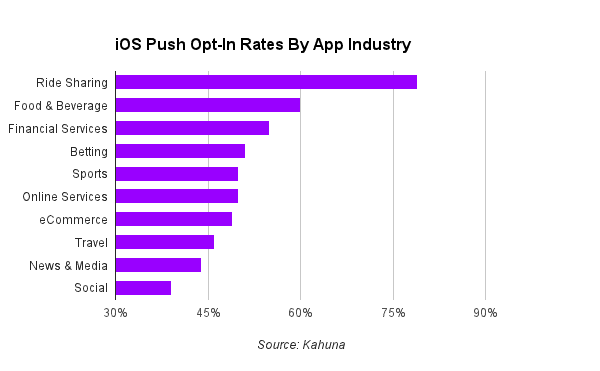
Source
The best idea is to play around with the timing of your push notifications and closely track their delivery rates until you find the most relevant time to send notifications. Make push notifications personal and valuable.
Gaining your user’s consent for push notifications is a great win – don’t ruin it. It is estimated that 60% of app users turn off push notifications permanently. Make sure you only send valuable, precisely personalized and timely messages.
Statistics show that well-targeted push campaigns are 1.5-2 times more likely to drive conversions than campaigns for all users from the subscriber base.
An average CTR is about 15%, but it is higher for provocative messages, targeted and transactional campaigns (up to 30%).
Final thoughts
Push notifications can be (sparingly!) used for a lot of useful things. They can inform the user about a won/lost online auction, show the latest sports scores, prompt the user to take a specific action, or let them know about an event, such as a flash sale on their favorite website.
It definitely takes some trial and error, but a re-alignment of your approach to push notifications can make it one of the top tools in your user engagement arsenal. It’s still a relatively simple, low cost and high engagement channel that’s easy to maintain – if you follow a couple of key do’s and don’ts.
If you find this article valuable, you can share it on social media →
Read more about the VOD & OTT Industry!
October 27, 2023
The power of video analytics: optimize video content with data
Learn how video analytics measures ROI, improves user experience and enhances content strategy!
June 29, 2023
LightningJS takes the development world by storm, but why?
The pursuit of discovering new, powerful tools lead to the rise of Lightning JS. What are the benefits of this popular TV app framework?
June 15, 2023
Signs of outdated frontend part 2: More red flags
Old practices may get in the way of the success of your solution. Lear the top signs of outdated frontend in our second take on this topic.
Are you looking for a partner to build a Video Solution?
Leave your email and a short description about your project. We would gladly discuss different cooperation possibilities!




